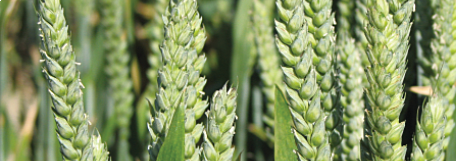
Get set for cereal success
Cereal crops are demanding on soil nutrient reserves, and nutrient levels should ideally be in the correct range for optimum production. However, this may not be practical or economic for some South Island soils, the nutrients removed by the previous crop should at least be replaced to avoid mining nutrient reserves.
“When looking at fertiliser for your cereal crop, consider the nutrients removed and retained by the previous crop. If a high yield was achieved, more nutrients will have been removed,” says Ballance Nutrient Dynamics Specialist, Jim Risk.
“Take into account the previous crop type and how its residue was managed. Different types of cereal crop residues contain varying amounts of nutrients, and this, coupled with how it is managed, impacts the types and amounts of nutrients returned to the soil,” he says. Removing residue removes its nutrient content, but varying amounts of nutrients are returned to the soil by burning residues, leaving them on the soil surface or incorporating them into the soil.
Sowing cereal crops in autumn also needs a bit of planning ahead for winter conditions, as sulphate sulphur (S), nitrogen (N), and to a far lesser degree, potassium (K) can leach in cold, wet soils when plant uptake is low.
“Leaching can be minimised by using the right products at the right time,” says Jim. “If winter rainfall is high, split S between autumn and spring, or delay it until spring. If S levels are low at sowing, a product such as Sulphurgain 15S provides an immediate boost of sulphate S as well as slow release elemental S, which won’t leach over winter. However, if levels are low, and not all of the elemental S releases by spring, apply SOA or SustaiN Ammo as a first side dressing.”
In the South Island, relatively little growth occurs between an autumn sowing and late winter. “Even with wheat, there is usually enough N in the soil to support growth until the first spring side dressing is required at Growth Stage (GS) 30 to 31. If spring soil mineral N levels are very low or the crop has had a poor establishment, some N application may be brought forward.”
“Applying K in autumn means one less thing to do in spring, but on coarse textured soils with high rainfall, splitting the application minimises leaching losses.” Soil pH for cereal crops should be between pH 5.8 and 6.2. Wheat can cope with a slightly lower pH but barley is more sensitive.
“Lime needs at least 12 months to take full effect, and 1 tonne of lime per hectare shifts pH by 0.1. If your pH is less than ideal, take this into account in your yield estimates,” says Jim.
YaraMila Actyva S is an ideal base/starter fertiliser for autumn (or spring) sown cereals. It contains N, P, K and S along with key trace elements in a convenient granule, suitable for broadcasting or drilling, which helps promote an even establishment. If magnesium is needed then a product such as Serpentine Super 7K, also containing K, is useful. Granulated Calmag is another option, or for extremely low magnesium levels requiring an immediately plant available form, use Kieserite Granular.
For more information on cereal nutrient requirements, contact your Ballance Agri-Nutrients Nutrient Specialist or your local PGG Wrightson Technical Field Representative.



